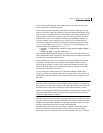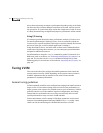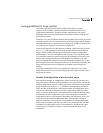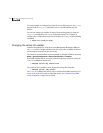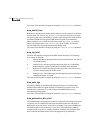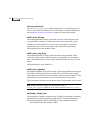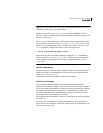
479Performance monitoring and tuning
Tuning VxVM
dmp_stat_interval
The time interval between gathering DMP statistics. The default and minimum
value is 1 second.
The value of this tunable is changed by using the vxdmpadm settune command.
vol_checkpt_default
The interval at which utilities performing recoveries or resynchronization
operations load the current offset into the kernel as a checkpoint. A system
failure during such operations does not require a full recovery, but can continue
from the last reached checkpoint.
The default value of the checkpoint is 10240 sectors (10MB).
Increasing this size reduces the overhead of checkpointing on recovery
operations at the expense of additional recovery following a system failure
during a recovery.
vol_default_iodelay
The count in clock ticks for which utilities pause if they have been directed to
reduce the frequency of issuing I/O requests, but have not been given a specific
delay time. This tunable is used by utilities performing operations such as
resynchronizing mirrors or rebuilding RAID-5 columns.
The default for this tunable is 50 ticks.
Increasing this value results in slower recovery operations and consequently
lower system impact while recoveries are being performed.
vol_fmr_logsz
The maximum size in kilobytes of the bitmap that Non-Persistent FastResync
uses to track changed blocks in a volume. The number of blocks in a volume that
are mapped to each bit in the bitmap depends on the size of the volume, and this
value changes if the size of the volume is changed. For example, if the volume
size is 1 gigabyte and the system block size is 1024 bytes, a vol_fmr_logsz
value of 4 yields a map contains 32,768 bits, each bit representing one region of
32 blocks.
The larger the bitmap size, the fewer the number of blocks that are mapped to
each bit. This can reduce the amount of reading and writing required on
resynchronization, at the expense of requiring more non-pageable kernel
memory for the bitmap. Additionally, on clustered systems, a larger bitmap size
increases the latency in I/O performance, and it also increases the load on the
private network between the cluster members. This is because every other
member of the cluster must be informed each time a bit in the map is marked.



